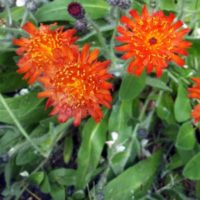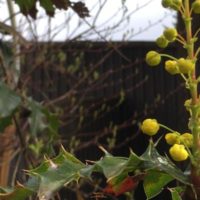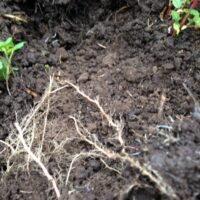District W’s
The mission of the Clackamas County SWCD covers many natural resource conservation opportunities.
Trying to describe all we do becomes confusing unless we provide a framework or context for the information. We call that framework our District W’s.
Our top three concerns revolve around water, weeds, and wildife, but we work to address many natural resource issues. When we report plans or actions, we place them into one of the following categories:
- Water quality and quantity
- Watersheds
- Weather
- Weeds
- Wildlands
- Wildlife
- Working lands
- Working together
- Workplace
- Workshops and education
- Worms (soil health)
While this structure is somewhat artificial, it helps to break up our work activities into smaller pieces that are easier to understand. And that’s something soil and water conservation districts are very good at: taking complex problems and breaking them into smaller tasks, and then accomplishing those tasks!
What does each “W” cover?
Water Quality and Quantity
The Water Quality and Quantity “W” is about protecting and restoring the quality of surface and ground water, and assuring future supplies of water for people, plants, and animals. District programs include water quality monitoring and many conservation practices. Rain gardens and bioswales help clean water before it infiltrates into ground water. Rainwater harvesting and irrigation system improvements are good examples of water quantity practices. Return to top of page…
Watersheds
The Watersheds category captures our work toward stronger, more resilient watershed conditions. Return to top of page…
Weather
Our Weather “W” is about developing responses to our changing climate, and to floods and droughts. Increasing the amount and quality of weather data collected locally is an example of a baseline strategy to help us deal with weather-induced changes. Return to top of page…
Weeds
Detecting, controlling, and eradicating invasive plants is captured in the Weeds category. Invaders affect wildlife and crop production. In some cases they pose health risks to people and animals. Return to top of page…
Wildlands
The Wildlands category is about working to improve and protect wildlands, including prairies and forests. One way we address wildland issues is by working with the Clackamas Stewardship Partners. Encouraging fire breaks and fire-resistant native plants around buildings also helps protect wildlands. Return to top of page…
Wildlife
The Wildlife category is about developing habitat conditions to enhance the life cycle of wild creatures, including fish. Our Conservation Reserve Enhancement Program (CREP) and riparian restoration activities are focused on habitat but also provide water quality benefits.
Return to top of page…
Working Lands
Clackamas County has an abundance of working lands. This category captures our work to help keep agricultural lands healthy and productive. Our work with nurseries, Christmas tree farms, crop and food producers, and farmers markets all fit in this category. Of course, work on these lands always provides additional conservation benefits! Return to top of page…
Working Together
Developing and nurturing key partnerships to help achieve our conservation mission is what we mean by Working Together. Captured here are the activities that help us build and maintain important conservation relationships. Return to top of page…
Workplace
Workplace is a bit of a catch-all term, but fundamentally, it is about assuring accountability and the sound delivery of services to our citizens and partners. Return to top of page…
Workshops, Outreach and Education
This category touches our work on reaching and teaching citizens, agencies, partners, and others. Return to top of page…
Worms (soil health)
Soil health has always been a core focal area for soil and water conservation districts. More recently, it has become a more visible program area across the country, and the same is true in Clackamas Soil and Water Conservation District. Healthy soil supports our farm, ranch, and forest economy, and provides the foundation for health habitats. Return to top of page…







